Wind Turbines
Between 2005 and 2007, the 5,000 wind turbines at the Altamont Pass Wind Resource Area (APWRA) in northern California killed approximately 9,000 birds each year. Eagles, hawks, falcons, and other birds of prey proved to be particularly vulnerable, accounting for about one-fourth of this mortality (Figure 10.28).
WIND TURBINES AND BIRDS
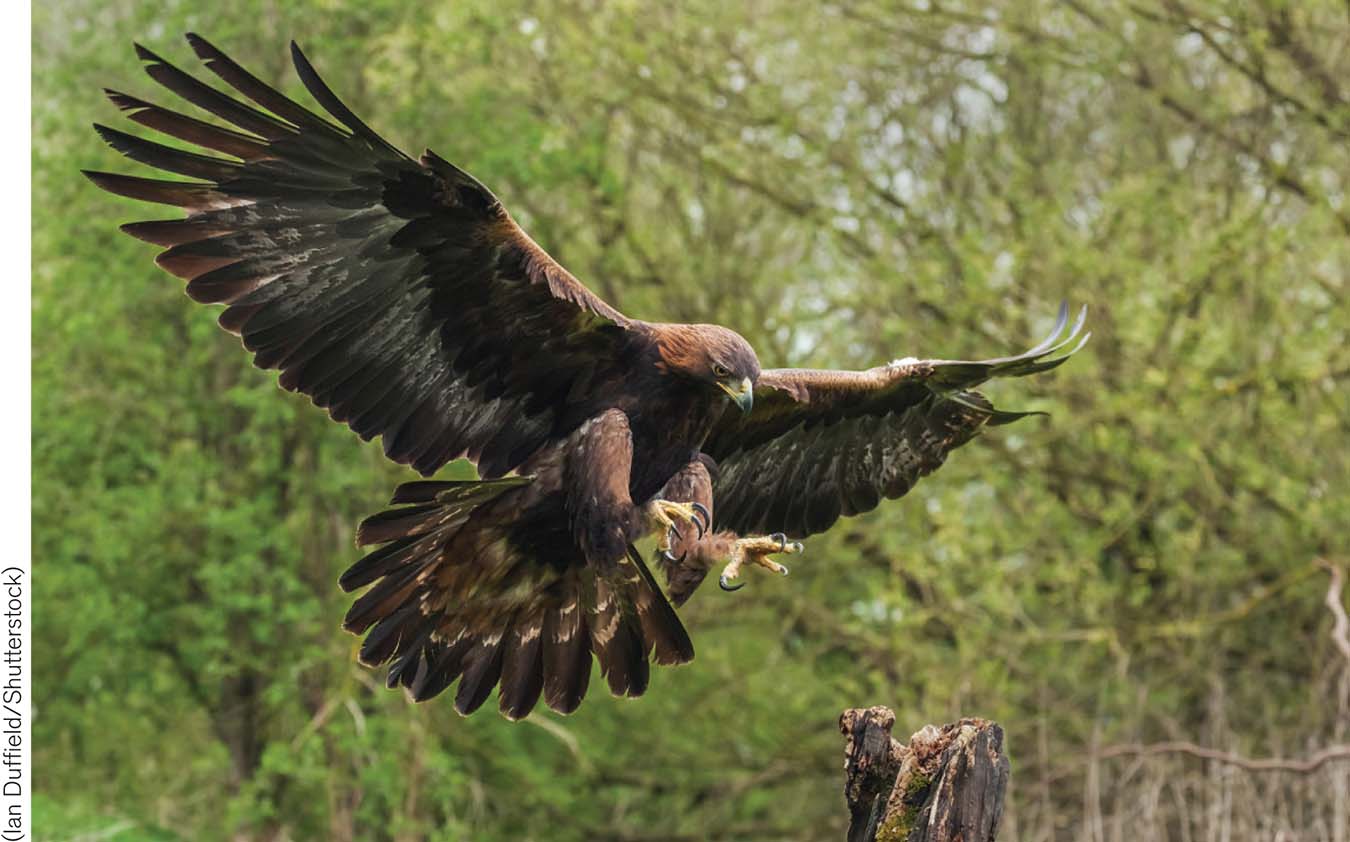
FIGURE 10.28 Most bird mortality associated with wind development results from collisions with turbines and associated structures. Many kinds of birds, but particularly birds of prey—such as this golden eagle, falcons, hawks, and owls—appear to be particularly subject to collisions with earlier-generation wind turbines.
But to put this problem in perspective, the estimated number of birds killed by wind turbines around the country is just 0.04% of the total annual collision deaths. Somewhere between 300 million and 1 billion birds die each year from colliding with buildings (Figure 10.29). Collisions with transmission lines (10 million to 154 million) and communication towers (4 million to 50 million) also kill vast numbers of birds. In addition, each year in the United States, cars, pesticides, and cats kill an estimated 60 million, 70 million, and 100 million birds, respectively. But wind power represents a growing threat: By 2030, when the number of wind turbines is projected to reach 100,000, the number of birds killed by wind turbines in the United States may reach 1 million annually.
ESTIMATED ANNUAL BIRD DEATHS (MEDIANS AND RANGES) IN THE UNITED STATES, RESULTING FROM COLLISIONS WITH VARIOUS STRUCTURES
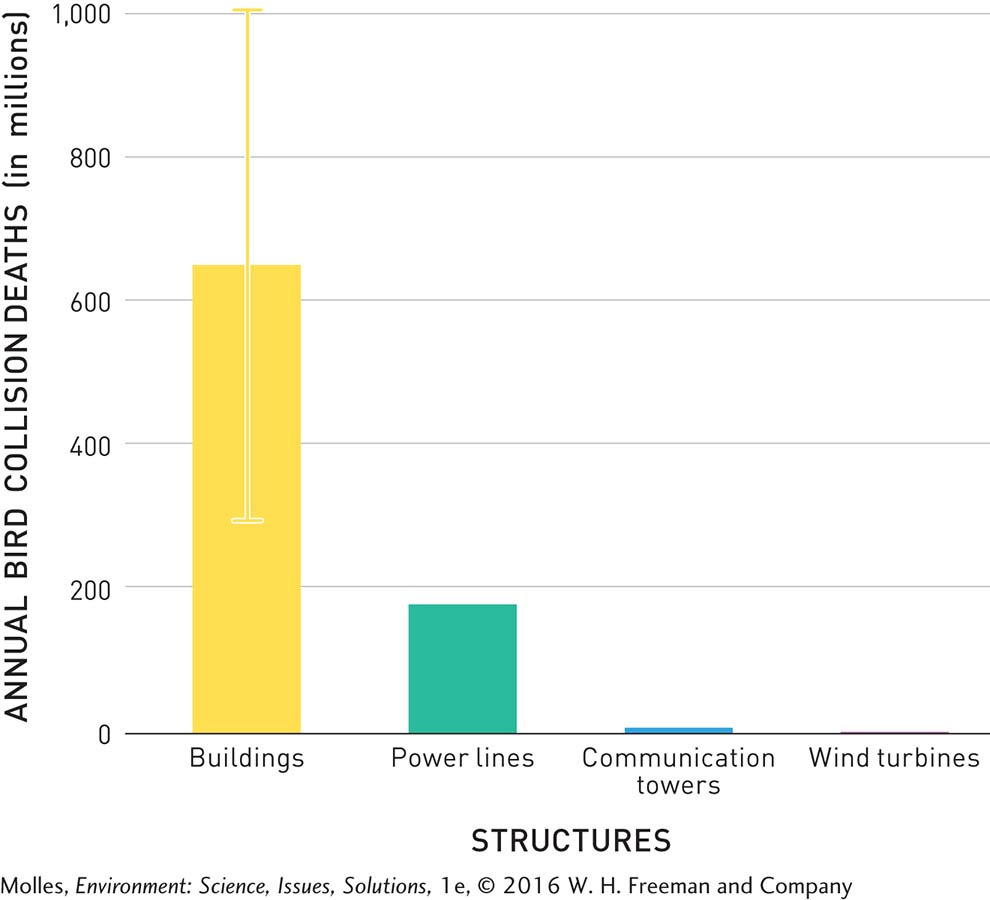
FIGURE 10.29 Estimates of annual bird deaths resulting from collisions with wind turbines were estimated at 573,000, compared with an estimated 300 million to 1 billion deaths resulting from collisions with buildings. (Data from American Bird Conservancy, 2015)
Page 313
While early environmental concern related to wind energy development was focused on birds, bats are also vulnerable. Surprisingly, most bat deaths at wind farms occur at low wind velocities of less than 22 kilometers per hour (13 miles per hour). Ongoing research indicates that at least some of bat mortality is the result of barotrauma, resulting from rapid expansion of their lungs as they enter areas of low air pressure near moving turbine blades.
The most vulnerable bats are tree-roosting migratory species such as eastern red bats, Lasiurus borealis, and silver-haired bats, Lasionycteris noctivagans (Figure 10.30). By 2020 more than 100,000 bats could be killed annually in the Mid-Atlantic Highlands region of the United States alone. This level of mortality could also affect a significant ecological service bats regularly provide: eating insects. A 2011 study (Boyles et al., 2011) estimated the value of bats’ contribution to controlling insect pests in the United States alone at nearly $23 billion annually. Reduced bat populations could translate into more insects attacking crops and farmers using more pesticides to counter them.
TWO BAT SPECIES VULNERABLE TO WIND ENERGY DEVELOPMENT
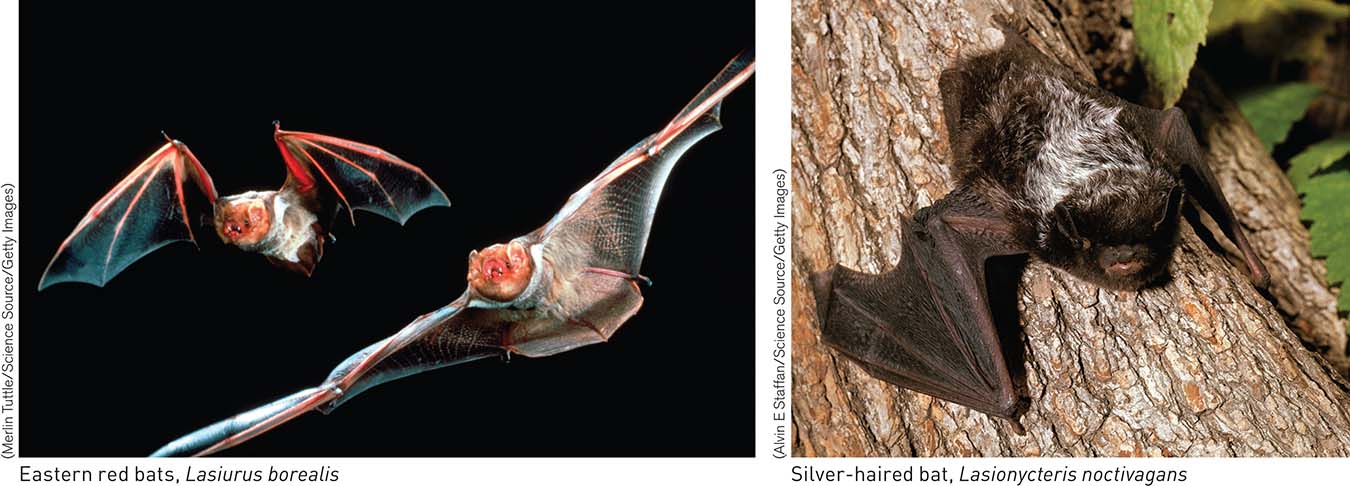
FIGURE 10.30 Bat mortality at wind turbines appears to be the result of both collisions and barotrauma, that is, lung damage resulting from bats entering low-pressure micro-environments created by the moving turbine blades. Two particularly vulnerable species are eastern red bats, Lasiurus borealis, and silver-haired bats, Lasionycteris noctivagans.
(Merlin Tuttle/Science Source/Getty Images) (Alvin E Staffan/Science Source/Getty Images)
Transmission Lines
The high-voltage transmission lines leading into and out of a wind farm, or any other type of power plant, are a significant source of bird mortality. There are approximately 800,000 kilometers (500,000 miles) of high-voltage transmission lines in the United States today (Figure 10.31). The additional transmission lines required by utility-scale wind and solar power plants will add significantly to bird mortality.

Should there be more efforts to reduce fatal bird collisions with buildings?
U.S. TRANSMISSION LINE GRID
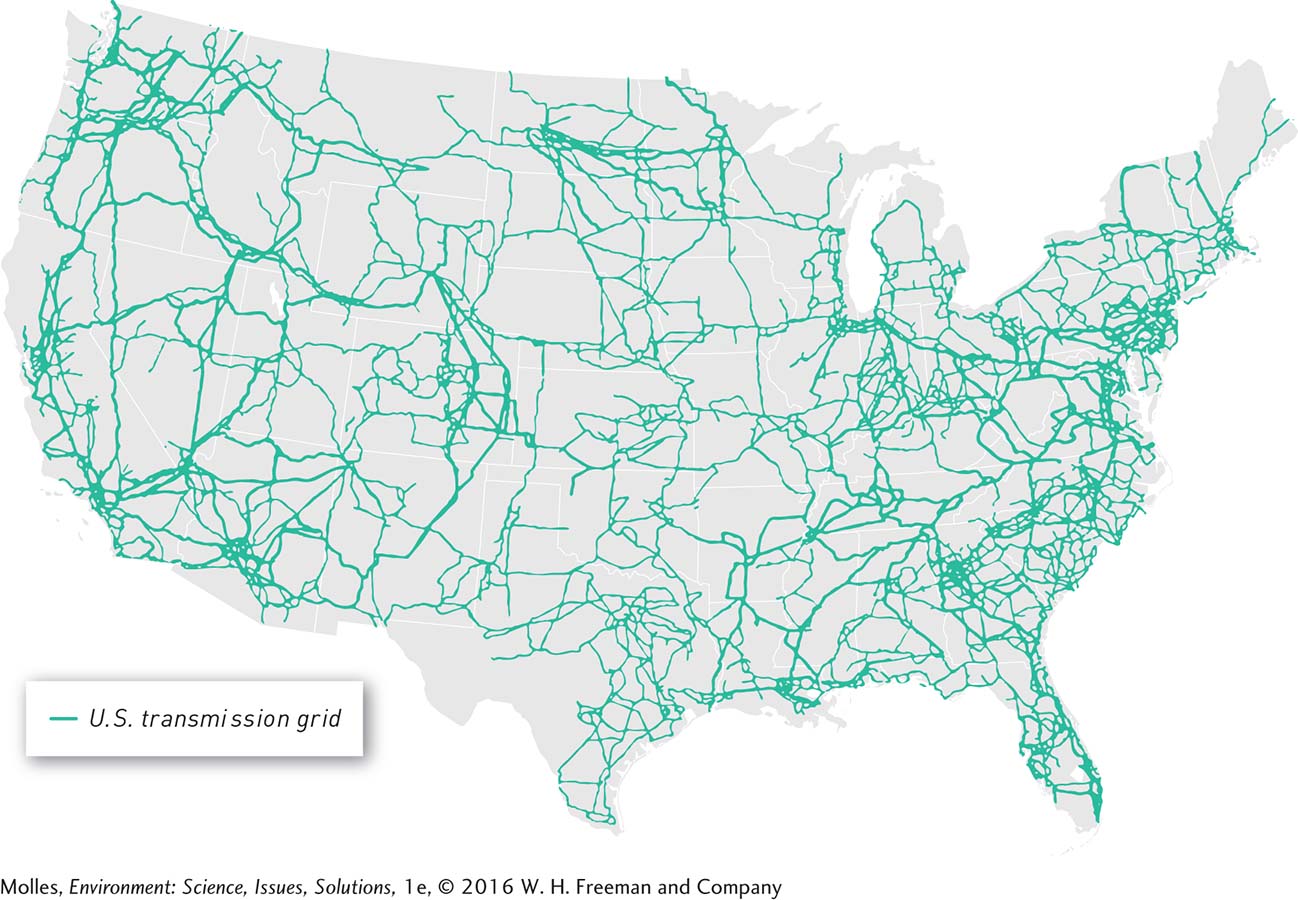
FIGURE 10.31 Transmission line networks are responsible for millions of bird deaths annually in the United States alone.

Although underground transmission lines cost far more than above-ground towers, should underground electrical transmission be phased in gradually to reduce environmental impact?
Some bird species are particularly subject to collisions with transmission lines. Unfortunately, planning for the routing of transmission lines has sometimes failed to consider such vulnerabilities. For instance, a proposed switching facility in eastern New Mexico would place electrical transmission lines across the Middle Rio Grande of central New Mexico, obstructing the daily flight path of wintering greater sandhill cranes (Grus canadensis), a species for which transmission lines can be a major source of morality (Figure 10.32).
VULNERABILITY TO ELECTRICAL TRANSMISSION LINES
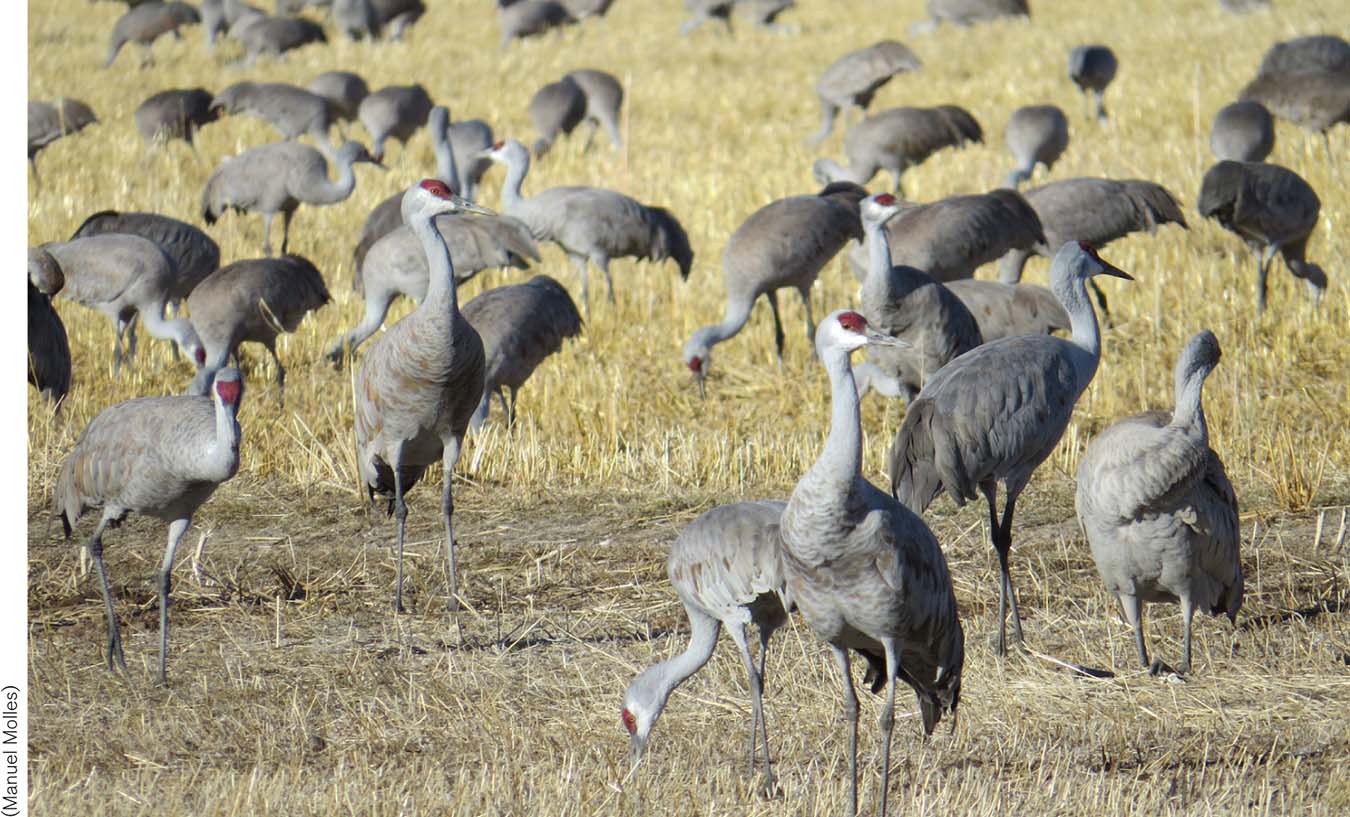
FIGURE 10.32 Some birds, such as the sandhill crane (Grus canadenis), are especially vulnerable to death from collisions with electrical transmission lines.
(Manuel Molles)
Page 314
Wind Developments Harm Wildlife Habitat
In the Great Plains, researchers have found that bird diversity and densities are lower in areas where wind-generation facilities have been built, compared with off-site reference areas. In one study, biologists followed the movements of prairie chickens fitted with radio collars and found that they avoid power transmission lines and wind generators. This may be because they avoid any tall structures where hawks, their natural predators, may roost. Regardless, wind energy development may be subdividing remnant populations of prairie chickens into increasingly isolated habitat fragments. One species of special concern in sagebrush habitats is the sage grouse, Centrocercus urophasianus, which abandon their mating areas when tall structures are built near them (Figure 10.33). Conservationists fear this could increase their risk of extinction.

How might basic studies of the behavior, ecology, and evolutionary history of sensitive species, such as prairie chickens, help in the design of low-impact renewable energy systems?
PRAIRIE BIRDS IMPACTED BY WIND DEVELOPMENT
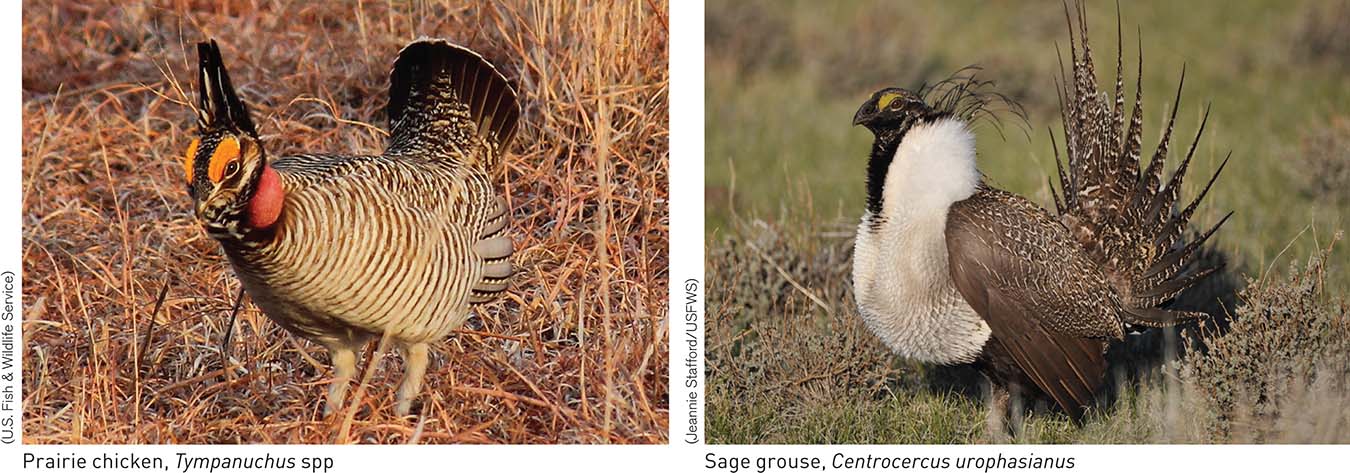
FIGURE 10.33 Prairie chickens and sage grouse inhabit prime areas for wind energy development. Unfortunately, both species can be impacted by such developments because they avoid tall structures, such as wind turbine and transmission line towers, which hawks and other raptors may use as perches from which to spot prey and launch attacks.
(U.S. Fish & Wildlife Service) (Jeannie Stafford/USFWS)
Think About It
Considering the relative bird mortality caused by different factors, are concerns about mortality resulting from wind development out of proportion to actual impacts on bird populations? Argue both for and against this position.
With house cats currently killing approximately 1,000 times the number of birds that die from collisions with wind turbines, should we consider discouraging outdoor foraging by pet cats?








